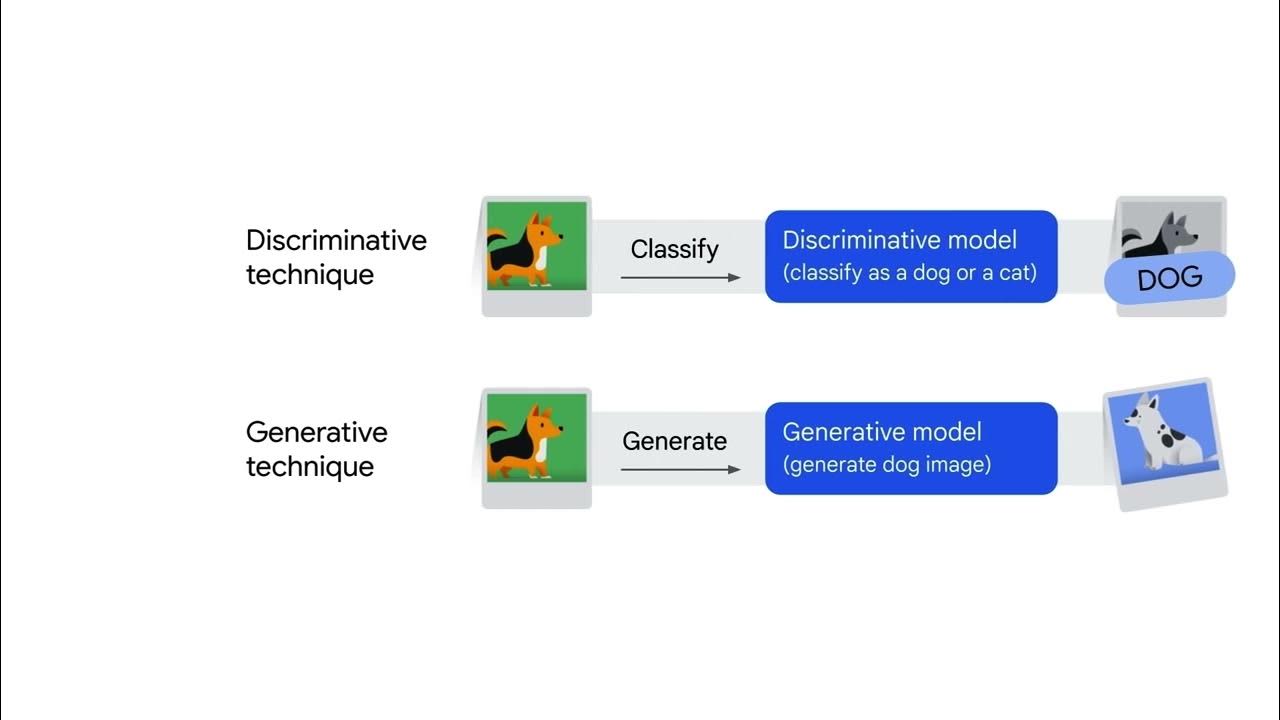Introduction to Generative AI
Summary
TLDRThis video script introduces generative AI, a subset of deep learning that uses neural networks to create new content like text, images, and audio. It explains the fundamentals of AI, the difference between AI and machine learning, and the types of machine learning models. The script delves into the capabilities of generative models, the importance of training data, and the use of prompts to guide AI output. It also highlights the potential applications of generative AI in various industries and showcases tools like Vertex AI, Foundation models, and the versatile Gemini model for diverse AI tasks.
Takeaways
- 🧠 Generative AI is a type of AI technology that can create various content including text, images, audio, and synthetic data.
- 🤖 Artificial Intelligence (AI) is a branch of computer science that focuses on creating intelligent agents and systems capable of reasoning, learning, and acting autonomously.
- 📈 Machine Learning is a subset of AI that enables models to learn from input data and make predictions on new, unseen data.
- 🏷️ Supervised learning involves models trained on labeled data, while unsupervised learning deals with unlabeled data, focusing on discovering patterns and grouping.
- 🧠 Deep Learning is a subset of machine learning that uses artificial neural networks to process complex patterns, inspired by the human brain.
- 🔀 Generative AI is a subset of deep learning, capable of using both labeled and unlabeled data through various learning methods.
- 📊 Generative models generate new data instances based on learned probability distributions, unlike discriminative models that classify or predict labels.
- 📚 Large language models, a type of generative AI, learn patterns in language and can generate human-like text in response to prompts.
- 🛠️ Prompts are used to guide the output of a generative AI model, and effective prompt design is crucial for desired results.
- 🖼️ Generative AI models come in various types, such as text-to-text, text-to-image, text-to-video, and text-to-3D, each serving different applications.
- 🌐 Foundation models are large AI models pre-trained on vast data, adaptable for numerous downstream tasks, potentially revolutionizing various industries.
Q & A
What is generative AI?
-Generative AI is a type of artificial intelligence technology that can produce various types of content including text, imagery, audio, and synthetic data.
How is AI defined in the context of this script?
-AI is described as a branch of computer science that deals with the creation of intelligent agents and systems that can reason, learn, and act autonomously.
What is the relationship between AI and machine learning?
-Machine learning is a subfield of AI. It involves programs or systems that train a model from input data, enabling the model to make useful predictions from new, never-before-seen data.
What distinguishes supervised machine learning models from unsupervised ones?
-Supervised models use labeled data that comes with a tag, while unsupervised models work with unlabeled data that has no tag, focusing on discovery and grouping within the data.
How does deep learning fit into the AI discipline?
-Deep learning is a subset of machine learning methods that uses artificial neural networks to process more complex patterns than traditional machine learning models.
What is the main difference between generative and discriminative models?
-Generative models generate new data instances based on a learned probability distribution, while discriminative models classify or predict labels for data points based on learned relationships from labeled data.
What is a prompt in the context of generative AI?
-A prompt is a short piece of text given to a large language model as input, which can be used to control the output of the model.
What are the potential issues with Transformer models like hallucinations?
-Hallucinations refer to the generation of nonsensical or grammatically incorrect words or phrases by the model, often caused by insufficient data, noisy data, lack of context, or insufficient constraints.
How can generative AI models be used for code generation?
-Generative AI models can help in debugging source code, explaining code line by line, crafting SQL queries, translating code from one language to another, and generating documentation and tutorials for source code.
What is the role of Vertex AI Studio in working with generative AI models?
-Vertex AI Studio allows developers to quickly explore and customize generative AI models for use in their applications on Google Cloud, providing tools and resources to facilitate the creation and deployment of these models.
What are Foundation models and how can they be utilized?
-Foundation models are large AI models pre-trained on vast amounts of data and designed to be adapted or fine-tuned for a wide range of downstream tasks, revolutionizing industries and enabling capabilities like sentiment analysis, image captioning, and fraud detection.
Outlines

This section is available to paid users only. Please upgrade to access this part.
Upgrade NowMindmap

This section is available to paid users only. Please upgrade to access this part.
Upgrade NowKeywords

This section is available to paid users only. Please upgrade to access this part.
Upgrade NowHighlights

This section is available to paid users only. Please upgrade to access this part.
Upgrade NowTranscripts

This section is available to paid users only. Please upgrade to access this part.
Upgrade Now5.0 / 5 (0 votes)





